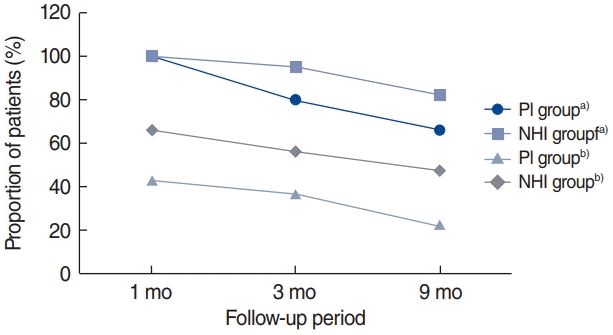1. Sullivan CE, Issa FG, Berthon-Jones M, Eves L. Reversal of obstructive sleep apnoea by continuous positive airway pressure applied through the nares. Lancet. 1981; Apr. 1(8225):862–5.

2. McGinley BM, Schwartz AR, Schneider H, Kirkness JP, Smith PL, Patil SP. Upper airway neuromuscular compensation during sleep is defective in obstructive sleep apnea. J Appl Physiol (1985). 2008; Jul. 105(1):197–205.

3. Antic NA, Catcheside P, Buchan C, Hensley M, Naughton MT, Rowland S, et al. The effect of CPAP in normalizing daytime sleepiness, quality of life, and neurocognitive function in patients with moderate to severe OSA. Sleep. 2011; Jan. 34(1):111–9.

4. McEvoy RD, Antic NA, Heeley E, Luo Y, Ou Q, Zhang X, et al. CPAP for prevention of cardiovascular events in obstructive sleep apnea. N Engl J Med. 2016; Sep. 375(10):919–31.

5. Lisan Q, Van Sloten T, Marques Vidal P, Haba Rubio J, Heinzer R, Empana JP. Association of positive airway pressure prescription with mortality in patients with obesity and severe obstructive sleep apnea: the sleep heart health study. JAMA Otolaryngol Head Neck Surg. 2019; Jun. 145(6):509–15.

6. Weaver TE, Maislin G, Dinges DF, Bloxham T, George CF, Greenberg H, et al. Relationship between hours of CPAP use and achieving normal levels of sleepiness and daily functioning. Sleep. 2007; Jun. 30(6):711–9.

7. Kribbs NB, Pack AI, Kline LR, Smith PL, Schwartz AR, Schubert NM, et al. Objective measurement of patterns of nasal CPAP use by patients with obstructive sleep apnea. Am Rev Respir Dis. 1993; Apr. 147(4):887–95.

8. Simon-Tuval T, Reuveni H, Greenberg-Dotan S, Oksenberg A, Tal A, Tarasiuk A. Low socioeconomic status is a risk factor for CPAP acceptance among adult OSAS patients requiring treatment. Sleep. 2009; Apr. 32(4):545–52.

9. Gulati A, Ali M, Davies M, Quinnell T, Smith I. A prospective observational study to evaluate the effect of social and personality factors on continuous positive airway pressure (CPAP) compliance in obstructive sleep apnoea syndrome. BMC Pulm Med. 2017; Mar. 17(1):56.

10. Leemans J, Rodenstein D, Bousata J, Mwenge GB. Impact of purchasing the CPAP device on acceptance and long-term adherence: a Belgian model. Acta Clin Belg. 2018; Feb. 73(1):34–9.

11. Han EK, Yoon IY, Chung SH. The compliance and effect of CPAP in obstructive sleep apnea syndrome. Sleep Med Psychophysiol. 2006; Dec. 13(2):52–8.
12. Lee SM, Lee YJ, Kim JH. Common side effects and compliance with nasal continuous positive airway pressure in Korean OSA patients: short-term follow up. J Korean Sleep Res Soc. 2010; Jun. 7(1):1–7.

13. KIM MJ, Kim MJ, Bae SH, Park CH, Kim DK. Predictors of adherence with positive airway pressure treatment in patients with obstructive sleep apnea in Korean. J Rhinol. 2015; Nov. 22(2):89–95.

14. Kim SL, Kim JA, Kim DS, Jo MG, Kim SD, Cho KS. Effect of doctor and device manager on adherence with positive airway pressure therapy in obstructive sleep apnea patients. J Rhinol. 2018; May. 25(1):26–31.

15. Johns MW. A new method for measuring daytime sleepiness: the Epworth sleepiness scale. Sleep. 1991; Dec. 14(6):540–5.

16. Naik S, Al-Halawani M, Kreinin I, Kryger M. Centers for Medicare and Medicaid Services positive airway pressure adherence criteria may limit treatment to many Medicare beneficiaries. J Clin Sleep Med. 2019; Feb. 15(2):245–51.

17. Van Ryswyk E, Anderson CS, Antic NA, Barbe F, Bittencourt L, Freed R, et al. Predictors of long-term adherence to continuous positive airway pressure in patients with obstructive sleep apnea and cardiovascular disease. Sleep. 2019; Oct. 42(10):zsz152.

18. Popescu G, Latham M, Allgar V, Elliott MW. Continuous positive airway pressure for sleep apnoea/hypopnoea syndrome: usefulness of a 2 week trial to identify factors associated with long term use. Thorax. 2001; Sep. 56(9):727–33.

19. Billings ME, Kapur VK. Medicare long-term CPAP coverage policy: a cost-utility analysis. J Clin Sleep Med. 2013; Oct. 9(10):1023–9.

20. Ghrairi H, Khalfallah I, Abid N, Loukil M. Adherence to treatment with continuous positive airways pressure. Rev Mal Respir. 2018; May. 35(5):531–7.
21. Sin DD, Mayers I, Man GC, Pawluk L. Long-term compliance rates to continuous positive airway pressure in obstructive sleep apnea: a population-based study. Chest. 2002; Feb. 121(2):430–5.

22. Galetke W, Anduleit N, Richter K, Stieglitz S, Randerath WJ. Comparison of automatic and continuous positive airway pressure in a night-by-night analysis: a randomized, crossover study. Respiration. 2008; Mar. 75(2):163–9.

23. Mulgrew AT, Cheema R, Fleetham J, Ryan CF, Ayas NT. Efficacy and patient satisfaction with autoadjusting CPAP with variable expiratory pressure vs standard CPAP: a two-night randomized crossover trial. Sleep Breath. 2007; Mar. 11(1):31–7.

24. Randerath WJ, Schraeder O, Galetke W, Feldmeyer F, Ruhle KH. Autoadjusting CPAP therapy based on impedance efficacy, compliance and acceptance. Am J Respir Crit Care Med. 2001; Mar. 163(3 Pt 1):652–7.

25. Rafael-Palou X, Turino C, Steblin A, Sanchez-de-la-Torre M, Barbe F, Vargiu E. Comparative analysis of predictive methods for early assessment of compliance with continuous positive airway pressure therapy. BMC Med Inform Decis Mak. 2018; Sep. 18(1):81.

26. Campos-Rodriguez F, Martinez-Garcia MA, Reyes-Nunez N, Caballero-Martinez I, Almeida-Gonzalez CV, Catalan-Serra P, et al. Longterm continuous positive airway pressure compliance in females with obstructive sleep apnoea. Eur Respir J. 2013; Nov. 42(5):1255–62.

27. Wohlgemuth WK, Chirinos DA, Domingo S, Wallace DM. Attempters, adherers, and non-adherers: latent profile analysis of CPAP use with correlates. Sleep Med. 2015; Mar. 16(3):336–42.

28. Means MK, Edinger JD, Husain AM. CPAP compliance in sleep apnea patients with and without laboratory CPAP titration. Sleep Breath. 2004; Mar. 8(1):7–14.

29. Lee CH, Leow LC, Song PR, Li H, Ong TH. Acceptance and adherence to continuous positive airway pressure therapy in patients with obstructive sleep apnea (OSA) in a Southeast Asian privately funded healthcare system. Sleep Sci. 2017; Apr-Jun. 10(2):57–63.

30. Pandey A, Mereddy S, Combs D, Shetty S, Patel SI, Mashaq S, et al. Socioeconomic inequities in adherence to positive airway pressure therapy in population-level analysis. J Clin Med. 2020; Feb. 9(2):442.






 PDF
PDF Citation
Citation Print
Print



 XML Download
XML Download